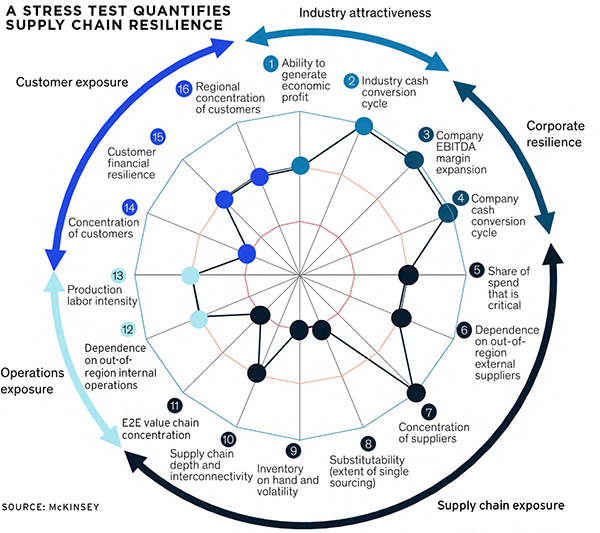Acing Your Stress Test

Facing more frequent disruptions—from natural disasters to the pandemic—supply chain professionals are shifting their focus to mitigate risk and assess resilience.
Post-pandemic, 93% of executives responding to a McKinsey survey say they expect to increase resilience by rebalancing their supply chains, an increase from 70% before the pandemic.
A supply chain resilience stress test is a key first step in assessing risk. Because risks are always changing, conduct the test on a recurring basis, the report advises. A stress test assesses resilience across the following factors (see chart):
- Industry attractiveness. How well does your industry create economic profit and perform on cash conversion compared to other sectors?
- Corporate resilience. How well does your company perform on earnings and cash-conversion cycle compared to similar companies?
- Global supply chain. What parts of the supply chain, including suppliers, could be at high risk when major disruption occurs?
- Operations. Which internal operations and labor pool could be severely impacted in the face of major disruption?
- Customers. What customers might be at high risk when major disruption occurs?
